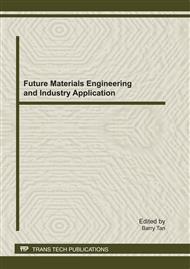p.396
p.403
p.409
p.415
p.421
p.428
p.433
p.440
p.445
Strategic Environmental Assessment and Research of Ecotourist Construction of Agricultural City-Taking the Green Agricultural City of Suihua as an Example
Abstract:
This paper, according to the characteristics of the strategic environmental assessment of ecotourism, constructs the approach system of the strategic environmental assessment of ecotourism, that is, (a) identifying the environmental influence by listing; (b) making assessment of the value of ecotourist resources through the approaches of multilayer analysis and obscure overall judgment integration; (c) making prediction of the environmental influence through the analysis of bearing capacity and adopting this method to conduct practical research of ecotourist planning of Suihua in Heilongjiang Province.
Info:
Periodical:
Pages:
433-439
Citation:
Online since:
October 2011
Authors:
Price:
Сopyright:
© 2012 Trans Tech Publications Ltd. All Rights Reserved
Share:
Citation:


